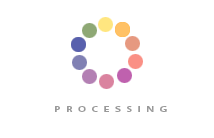
Pingyao Ancient Cityuseum
Delhi
Pingyao Ancient Cityuseum Itinerary
Day 1: Arrival in Pingyao Morning:
Arrive in Pingyao, either by train or bus. Check into your accommodation, preferably a traditional courtyard hotel within the ancient city walls. Afternoon: Begin your exploration of Pingyao Ancient City by walking along the well-preserved city walls. Enjoy panoramic views of the city and its surroundings from the elevated vantage point. Evening: Stroll through the atmospheric streets of Pingyao's old town, illuminated by traditional lanterns and lined with Ming and Qing Dynasty-era buildings. Sample local delicacies at a traditional restaurant, such as Pingyao beef, savory pastries, and handmade noodles.
Day 2: Historic Sites and Museums Morning:
Visit the Rishengchang Exchange Shop, one of the earliest banks in China, to learn about Pingyao's role as a financial center during the Ming and Qing Dynasties. Explore other historic sites such as the City God Temple and the Ancient Government Office. Midday: Enjoy a leisurely lunch at a local restaurant, savoring Shanxi-style dishes such as sliced noodles, vinegar-braised pork, and fried dough twists. Afternoon: Spend the afternoon visiting museums and cultural attractions in Pingyao, such as the Pingyao County Museum, the Pingyao Ancient Weapon Museum, and the Chinese Chamber of Commerce Museum. Learn about the city's history, architecture, and cultural heritage. Evening: Attend a traditional performance or cultural show in Pingyao's old town, featuring music, dance, and theater performances rooted in local traditions.
Day 3: Day Trip to Wang Family Compound and Shuanglin Temple Morning:
Take a day trip to the Wang Family Compound, a sprawling complex of traditional courtyard homes built by the wealthy Wang family during the Qing Dynasty. Explore the grand residences, ancestral halls, and beautifully landscaped gardens. Midday: Have lunch at a local restaurant near the Wang Family Compound, sampling Shanxi-style dishes made with fresh, locally sourced ingredients. Afternoon: Visit Shuanglin Temple, a UNESCO World Heritage site known for its exquisite wooden sculptures and intricate architectural details. Marvel at the ancient Buddhist artwork and soak in the serene atmosphere of the temple complex. Evening: Return to Pingyao in the evening. Enjoy dinner at a local restaurant, perhaps trying some of the regional specialties you haven't tasted yet.
Day 4: Departure Morning:
Enjoy a leisurely breakfast at your accommodation, savoring the flavors of local specialties such as steamed buns, soy milk, and fried dough sticks. Midday: Take some time to explore Pingyao's souvenir shops and boutiques, where you can purchase traditional handicrafts, artwork, and locally made products. Afternoon: Depending on your departure time, you may have some free time to revisit your favorite sites in Pingyao or relax at a local teahouse. Departure: Check out of your accommodation and transfer to Pingyao Railway Station or Pingyao Bus Station for your onward journey.
Our Tour Details
-
Pick-up and DropDelhi
-
Duration3N/4D
-
Starting Price₹/-
Frequently asked Questions:
Pingyao Ancient City Museum is a cultural institution located in the ancient walled city of Pingyao, Shanxi Province, China. It showcases the history, culture, and heritage of Pingyao.
Pingyao Ancient City Museum is situated within the ancient city walls of Pingyao, a well-preserved ancient town in Shanxi known for its Ming and Qing Dynasty architecture.
The museum is significant for preserving and displaying artifacts related to the history, architecture, and cultural heritage of Pingyao, offering insights into its role as a UNESCO World Heritage Site.
The museum was established in 2002 to contribute to the preservation and promotion of Pingyao's cultural legacy.
The museum features exhibits on traditional Pingyao architecture, ancient city planning, historical artifacts, and showcases the lifestyle and culture of the people who lived in the town.
Yes, the museum's exhibits often focus on the Ming (1368–1644) and Qing (1644–1912) Dynasties, reflecting the historical periods during which Pingyao flourished.
Yes, Pingyao was historically an important financial center, and the museum may display artifacts related to ancient banking, including traditional bank instruments and documents.
The museum may have exhibits showcasing traditional Pingyao architecture, allowing visitors to understand the unique layout and design of the ancient city.
There is usually an entrance fee to visit Pingyao Ancient City Museum. The fee may vary based on factors such as age, nationality, and any ongoing exhibitions.
Yes, visitors to Pingyao Ancient City Museum can also explore the ancient city of Pingyao, which is renowned for its well-preserved city walls, ancient temples, and traditional courtyard homes.





